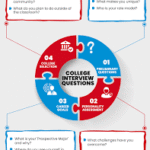For generations, standardized tests like the SAT and ACT played a major role in U.S. college admissions. A high score often meant a better shot at getting into competitive schools. But over the past few years, a major shift has taken place—one that’s transforming how students apply to college.
Welcome to the era of test-optional admissions.
In this article, we’ll explore what test-optional means, why more schools are embracing it, and what it means for students aiming to pursue higher education.
What Is Test-Optional Admissions?
In a test-optional admissions policy, students can choose whether or not to submit standardized test scores (like SAT or ACT) as part of their college application. If they feel their scores reflect their abilities, they can include them. If not, they can leave them out—without penalty.
This is different from:
- Test-blind: Schools don’t consider test scores at all, even if submitted.
- Test-flexible: Students may submit other test results (like AP or IB) instead of the SAT/ACT.
Why Did Test-Optional Admissions Become So Popular?
Although test-optional policies have existed for years, the COVID-19 pandemic gave them a massive boost. Test centers closed, exams were canceled, and students had limited opportunities to sit for standardized tests.
As a result, many colleges temporarily suspended testing requirements. But even after the pandemic, many schools decided to keep the policy in place—permanently.
Here’s why:
1. Fairness and Access
Critics argue that standardized tests favor students from wealthier backgrounds, who can afford expensive prep courses and private tutors. The goal of test-optional regulations is to give disadvantaged and low-income students an equal opportunity.
2. Reducing Stress

High-stakes testing creates pressure for students. By removing this requirement, schools aim to shift focus toward a student’s overall academic journey—including grades, activities, essays, and character.
3. Encouraging More Applicants
Some colleges saw a significant increase in applications after going test-optional. This gave schools a larger, more diverse applicant pool to choose from—which helps boost rankings and selectivity.
Which Colleges Are Test-Optional?
As of 2025, more than 1,800 U.S. colleges and universities have adopted test-optional policies. This includes:
- Ivy League schools like Harvard, Columbia, and Dartmouth
- prestigious public universities, such as the now test-blind University of California system
- Liberal arts colleges like Amherst, Wesleyan, and Bowdoin
However, not all schools have the same policies. Some remain test-required, especially for certain programs like engineering or honors tracks.
What Does This Mean for Students?
Test-optional admissions offer both opportunities and challenges. Here’s how students are affected:
👍 Benefits:
- More control over your application: If your test scores aren’t great, you don’t have to include them.
- Less pressure: You can focus more on grades, personal essays, and recommendation letters.
- Greater access: Test-optional policies give more students—especially those from disadvantaged backgrounds—a real shot at admission.
⚠️ Things to Consider:
- Even at test-optional colleges, some scholarships still need test results, so submitting them can still offer you an advantage if you do have strong scores.
- Certain majors or competitive programs might strongly recommend or require scores.
In short, students need to research each school carefully and make strategic decisions based on their strengths.
Do Test Scores Still Matter?
Yes, for some students, they do.
Although the test is optional, this does not imply that test results are not taken into account. A high SAT or ACT score can still enhance your application, especially if your GPA is lower or if you’re applying to highly selective colleges.
Students with strong academic records and test scores may want to include both to present the most complete picture.
What’s the Future of College Admissions?
A wider discussion about what really counts in education has been spurred by the growth of test-optional legislation. Should only numbers be used to determine admittance to colleges? Or should character, creativity, and resilience carry more weight?
As of now, many experts believe the test-optional trend is here to stay. Some schools might go back to requiring scores, but the overall direction is clear: flexibility and inclusivity are becoming the new norm.
Final Thoughts
Test-optional admissions have opened new doors for students across the country. While standardized tests once held a firm grip on college admissions, today’s process is becoming more holistic and student-friendly.
But with this new freedom comes responsibility. Students must carefully research, plan ahead, and decide what best represents their academic potential.
Whether you submit scores or not, one thing is certain: colleges are looking for more than just numbers; they’re looking for you.










